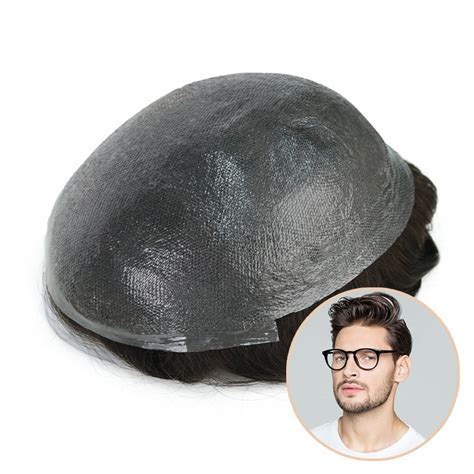Defining Creative Hair Design
Creative hair design is an art form that combines creativity, technical skill, and an understanding of the individual’s hair type and facial features. It encompasses a wide range of techniques, from classic cuts and colorations to avant-garde creations.

Market Analysis
According to the American Hairdressing Association (AHA), the U.S. hair care industry generates over $73 billion annually. Creative hair design is a significant part of this market, with demand growing due to:
- Increased consumer spending on personal appearance
- Popularity of social media and celebrity hair trends
- Growing awareness of hair health and care
Customer Needs and Pain Points
Customers seeking creative hair design typically have the following needs and pain points:
Needs:
- Unique and stylish hairstyles
- Confidence and self-expression through their hair
- Hair care advice and solutions
- Affordable yet professional services
Pain Points:
- Lack of inspiration or ideas
- Difficulty finding qualified stylists
- Damage to hair from chemical treatments
- High cost of professional hair services
Benefits of Creative Hair Design
Creative hair design offers numerous benefits to customers:
- Enhanced appearance: Creative hairstyles can transform one’s look, boost confidence, and draw attention.
- Self-expression: Hair can serve as a canvas for creativity, allowing individuals to express their personality and style.
- Hair care solutions: Stylists can provide personalized hair care advice and treatments to maintain healthy, beautiful hair.
- Social recognition: Unique and eye-catching hairstyles often garner admiration and compliments from others.
Current Trends in Creative Hair Design
Some of the most notable trends in creative hair design include:
- Pixie cuts: Short, edgy cuts that emphasize facial features.
- Bobs: Timeless and versatile, available in various lengths and styles.
- Layers: Add volume, texture, and movement to hair.
- Asymmetrical designs: Create a dramatic and unconventional look.
- Color melting: A seamless blend of two or more hair colors.
- Balayage: A freehand technique that mimics natural highlights.
- Ombre: A gradual transition from one color to another, creating a shaded effect.
Stylist Skills and Training
Creative hair design requires stylists to possess a combination of technical skills and artistic creativity:
- Cutting: Precision and attention to detail in creating hair shapes and textures.
- Coloring: Expertise in using dyes, toners, and bleach to achieve desired colors.
- Perming: Modifying hair texture using chemical solutions.
- Styling: Shaping and arranging hair using heat tools, brushes, and products.
- Consultation: Ability to listen and interpret client needs, providing expert recommendations.
Inspiration for Creative Hair Design
Stylists can draw inspiration from various sources to create unique and innovative hairstyles:
- Fashion and art: Current trends in clothing, makeup, and accessories can inspire hair designs.
- Cultural influences: Exploring different cultures can provide ideas for hairstyles, colors, and accessories.
- Nature: Organic textures, colors, and patterns found in nature can inspire hair designs.
- Client feedback: Listening to client preferences and desires can spark ideas for personalized hairstyles.
Table 1: Creative Hair Techniques
| Technique | Description | Benefits |
|---|---|---|
| Pixie cut | A short, edgy cut with minimal length | Emphasizes facial features, provides versatility |
| Bob | A timeless, versatile cut with a variety of lengths and shapes | Creates a polished and sophisticated look, easy to style |
| Layers | Graduated lengths of hair to add volume and texture | Adds movement and depth to hair, reduces bulk |
| Asymmetrical design | A cut that is longer on one side than the other | Creates a dramatic and unconventional look, adds edge |
Table 2: Creative Color Techniques
| Technique | Description | Benefits |
|---|---|---|
| Color melting | A seamless blend of two or more hair colors | Creates a natural and dimensional look, minimizes regrowth lines |
| Balayage | A freehand highlighting technique that mimics natural hair lightening | Adds subtle highlights and lowlights, low maintenance |
| Ombre | A gradual transition from one color to another | Creates a shaded effect, adds depth and interest |
Table 3: Customer Hair Care Needs
| Need | Description | Pain Points |
|---|---|---|
| Unique hairstyles | Desire for a distinctive and eye-catching look | Lack of inspiration or ideas, difficulty finding qualified stylists |
| Healthy hair | Concern for maintaining healthy, damage-free hair | Overuse of heat tools, chemical treatments, sun damage |
| Expert advice | Need for personalized hair care recommendations | Difficulty accessing reliable information, misinformation online |
| Affordable services | Desire for quality hair services at reasonable prices | High cost of professional hair care, lack of budget-friendly options |
Table 4: Benefits of Creative Hair Design for Customers
| Benefit | Description | Value |
|---|---|---|
| Enhanced appearance | Improved self-confidence, positive social interactions | Increased self-worth and attractiveness |
| Self-expression | Creative outlet for personality and individuality | Empowerment and uniqueness |
| Hair care solutions | Personalized advice and treatments for healthy hair | Reduced hair damage, improved hair growth |
| Social recognition | Admiration and compliments from others | Positive social feedback and validation |
Conclusion
Creative hair design is a thriving industry that offers numerous benefits to customers. By understanding the wants and needs of clients, stylists can create unique and eye-catching hairstyles that enhance appearance, provide self-expression, and promote hair health. Through ongoing innovation and artistic inspiration, creative hair design will continue to evolve, meeting the ever-changing demands of the beauty industry.
